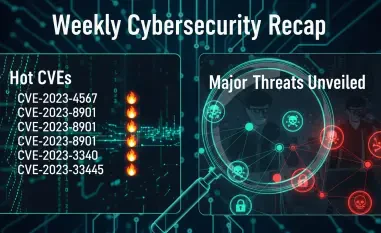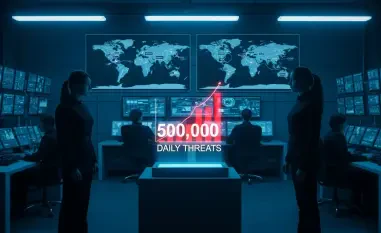The cybersecurity landscape was rocked by a staggering revelation: nation-state hackers infiltrated F5, a leading U.S.-based company, and stole source code and vulnerability data for its widely used BIG-IP product. This breach, attributed to a sophisticated state-sponsored group, has sent shockwaves through federal and private sectors alike, raising urgent questions about the security of critical network infrastructure. With BIG-IP systems integral to countless organizations worldwide, the potential for exploitation looms large. This roundup gathers insights, opinions, and actionable advice from a variety of cybersecurity experts and industry analyses to dissect how this breach unfolded, assess its implications, and offer guidance on fortifying defenses against such high-stakes threats.
Understanding the Crisis: What Experts Are Saying About the F5 Breach
The scale of the F5 breach has drawn intense scrutiny from cybersecurity professionals across the globe. Reports indicate that a nation-state actor, suspected to be a China-nexus group tracked as UNC5221, maintained access to F5’s network for at least 12 months. Industry observers have noted the alarming stealth of this intrusion, pointing to the use of a malware family known as BRICKSTORM as evidence of advanced tactics designed to evade detection. Many experts agree that this prolonged presence highlights a critical gap in current security frameworks, where even well-resourced companies can fall prey to persistent adversaries.
Differing perspectives emerge on the root causes of such a breach. Some analysts argue that the complexity of modern IT environments creates inevitable blind spots, making long-term intrusions almost unavoidable without cutting-edge monitoring tools. Others emphasize that organizational complacency or delayed updates to security protocols might have played a role, suggesting that even tech giants are not immune to basic lapses. This divergence in views underscores a broader debate on whether the industry is keeping pace with the evolving sophistication of state-sponsored threats.
A common thread among commentaries is the sheer significance of targeting a company like F5. As a cornerstone of network security for both government and corporate entities, the compromise of BIG-IP systems could have cascading effects. Experts warn that this incident serves as a stark reminder of the stakes involved when critical infrastructure providers become targets, urging a reevaluation of how such entities are protected in an era of relentless cyber espionage.
Breaking Down the Attack: Tactics and Stolen Data Risks
Stealthy Intrusion Tactics: How Did They Go Unnoticed?
Delving into the specifics of the attack, cybersecurity specialists have marveled at the persistence and cunning of the nation-state actor behind the F5 breach. The ability to remain undetected for over a year points to highly refined evasion techniques, including the deployment of custom malware. Many in the field have highlighted that such tactics are increasingly common among state-sponsored groups, which often prioritize low-profile operations over immediate disruption to maximize data extraction.
A contrasting opinion among professionals centers on the adequacy of existing detection mechanisms. Some argue that current tools are simply outmatched by adversaries who adapt faster than security solutions can evolve. Others counter that the issue lies not in technology but in implementation—suggesting that inconsistent monitoring practices or insufficient training may have allowed the attackers to operate unchecked for so long. This split in perspective raises critical questions about where the industry should focus its efforts to close these gaps.
The consensus, however, leans toward an urgent need for enhanced visibility into network activities. Analysts stress that organizations must adopt more proactive threat-hunting strategies to identify anomalies before they escalate into full-blown breaches. This incident with F5 has become a case study in the importance of anticipating stealthy, long-term threats rather than reacting after the damage is done.
The Stolen DatA Potential Disaster Waiting to Happen
The nature of the compromised data—portions of BIG-IP source code and details of undisclosed vulnerabilities—has alarmed many in the cybersecurity community. Experts caution that access to such sensitive information could enable attackers to craft zero-day exploits, potentially outpacing the rollout of patches. This risk is particularly acute for federal and private users who rely on BIG-IP systems to secure their networks, as any delay in mitigation could expose them to severe attacks.
Opinions vary on the immediacy of this threat. Some professionals believe that the window for exploitation is narrow, given F5’s ongoing efforts to address vulnerabilities, and suggest that the impact might be contained if updates are applied swiftly. Others are more pessimistic, warning that state-sponsored actors often have the resources to weaponize stolen data long before defenses are fortified. This disagreement highlights the uncertainty surrounding the true scope of damage that might unfold.
Despite these differences, there is widespread agreement on the gravity of source code theft. Industry voices stress that such data in hostile hands represents a ticking time bomb, capable of undermining trust in widely deployed technologies. The focus now, many argue, should be on rapid response and transparency to minimize the fallout for affected organizations.
The Broader Threat Landscape: Supply Chain Attacks on the Rise
Nation-State Focus on Tech Providers: A Growing Pattern
A recurring theme in expert discussions is the strategic shift by nation-state actors toward targeting technology providers like F5. Analysts note that supply chain attacks, where adversaries infiltrate a single provider to access a vast network of downstream users, have become a preferred method for maximizing impact. This trend, particularly linked to suspected Chinese hacking groups, reflects a calculated approach to exploiting interconnected digital ecosystems.
Some experts see this as a natural evolution of cyber warfare, driven by the recognition that tech giants are gateways to sensitive data across sectors. Others express concern that the industry has been slow to adapt, often underestimating the ripple effects of a single breach. These differing viewpoints reveal a tension between acknowledging the inevitability of such attacks and the need for stronger preventive measures at the supply chain level.
What unites these perspectives is a call for global reevaluation of how critical vendors are secured. Many in the field advocate for stricter standards and collaborative frameworks to protect the foundational technologies that underpin modern infrastructure. The F5 incident, they argue, must catalyze a shift in how supply chain security is prioritized on an international scale.
Implications for Users: Are Tech Giants Truly Impenetrable?
The breach has shattered assumptions about the invulnerability of major tech providers, prompting varied reactions from cybersecurity thought leaders. Some assert that no entity, regardless of size or reputation, can be considered immune to state-sponsored threats, given the resources and determination of such adversaries. This view pushes for a cultural shift in how organizations perceive their reliance on third-party systems.
Conversely, a segment of analysts argues that while breaches are inevitable, the focus should be on resilience rather than prevention alone. They suggest that building robust recovery mechanisms and redundancy into systems could mitigate the impact of such incidents. This pragmatic stance contrasts with more alarmist takes, offering a balanced lens on managing expectations in a high-risk environment.
Across these opinions, there is a shared recognition that end users—whether government agencies or private firms—must take greater responsibility for their security posture. Experts recommend rigorous vetting of vendors and continuous monitoring of integrated technologies to reduce exposure. The lesson from this breach, many agree, is that blind trust in tech providers is no longer a viable strategy.
Responses and Recommendations: Industry and Government Actions
F5 and Government Countermeasures: Are They Enough?
F5’s response to the breach, involving collaboration with leading cybersecurity firms and implementing measures like credential rotation and enhanced network defenses, has drawn mixed reviews. Many experts commend the company for its comprehensive approach and transparency after the initial delayed disclosure, which was requested by the U.S. Department of Justice. They view these steps as a model for how organizations can tackle sophisticated intrusions head-on.
However, skepticism persists among some professionals regarding the long-term effectiveness of these actions. Critics point out that the stolen data may already be in use to develop exploits, potentially rendering reactive measures insufficient. This divide in opinion reflects broader concerns about whether containment can keep pace with the speed of adversary innovation in exploiting vulnerabilities.
Additionally, the emergency directive from the Cybersecurity and Infrastructure Security Agency (CISA), requiring federal agencies to secure BIG-IP systems by a set deadline, has been both praised and questioned. While many see it as a necessary push for accountability, others argue that the timeline and scope might not fully address the complexity of the threat. This ongoing debate underscores the challenges of aligning rapid response with comprehensive protection.
Expert Tips for Organizations: Strengthening Defenses
Drawing from a range of industry insights, several actionable recommendations have emerged for organizations looking to shield themselves from similar threats. A frequently cited tip is the prioritization of timely software updates to close vulnerability gaps before they can be exploited. Analysts emphasize that staying current with patches is a fundamental yet often neglected defense mechanism in fast-moving threat landscapes.
Another key piece of advice focuses on securing public-facing interfaces, a common entry point for attackers. Experts suggest rigorous access controls and regular audits to ensure that external systems are not unnecessarily exposed. This practical guidance aims to address a critical weak link that state-sponsored actors frequently target in their campaigns.
Finally, investing in advanced threat detection capabilities is widely recommended as a way to identify stealthy intrusions early. Many in the field advocate for adopting machine learning-driven tools and proactive threat hunting to stay ahead of sophisticated adversaries. These strategies, drawn from diverse expert opinions, offer a multi-layered approach to bolstering organizational resilience against nation-state threats.
Reflecting on the F5 Breach: Key Takeaways and Next Steps
Looking back, the F5 BIG-IP security breach served as a sobering wake-up call for the cybersecurity community, exposing the vulnerabilities even in trusted technology providers. The collective insights from experts revealed a landscape where state-sponsored threats continually evolved, often outpacing traditional defenses. Discussions highlighted not just the technical prowess of the attackers but also the systemic challenges in securing sprawling supply chains.
Moving forward, organizations were encouraged to adopt a mindset of continuous vigilance, integrating regular system audits and fostering closer collaboration with vendors to anticipate risks. Exploring resources from agencies like CISA or engaging with industry forums for the latest threat intelligence became essential steps in staying informed. The incident underscored that safeguarding digital infrastructure demanded a shared commitment, pushing all stakeholders to innovate and adapt in the face of persistent, high-stakes cyber challenges.













